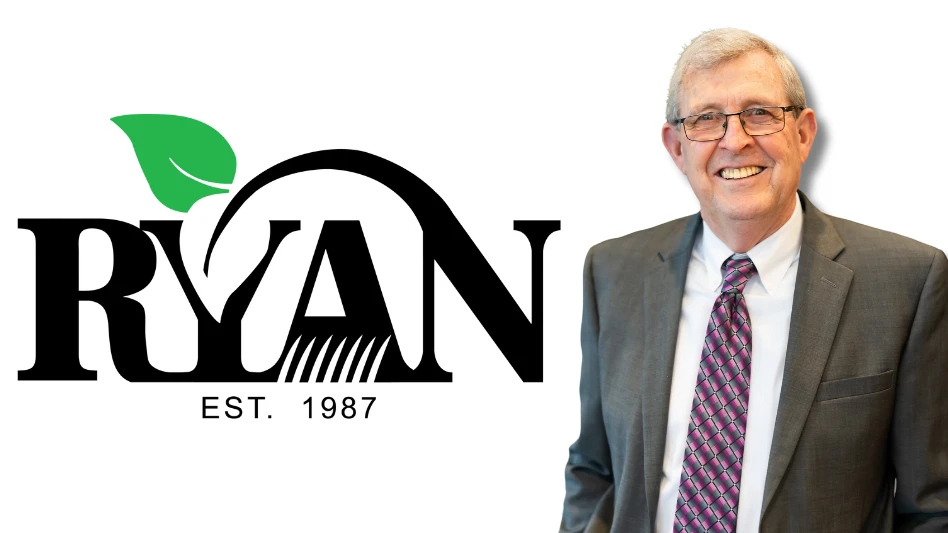 As costs for labor, materials and equipment continue to increase, landscapers are finding some solace in their success with raising prices. Nationwide, almost two-thirds – 63 percent – charge more for services now than they did three years ago. Here’s how landscapers in several markets are taking initiative and upping the ante for their operations.
As costs for labor, materials and equipment continue to increase, landscapers are finding some solace in their success with raising prices. Nationwide, almost two-thirds – 63 percent – charge more for services now than they did three years ago. Here’s how landscapers in several markets are taking initiative and upping the ante for their operations.
Polite pass
When Randy Newhard presents customers with a price increase, he doesn’t know if they will accept, but he is hoping they are at least open to negotiating.
“Sometimes it’s 2 percent, up to 5 if you can get it,” says Newhard, owner of New Way Landscape & Tree Services. Newhard really only goes up to 4.8 percent so it doesn’t seem as high as 5 percent. He has parted ways with smaller customers who rejected a price increase and who didn’t fit in the company’s ideal route density, as well as customers who haven’t seen an increase in a few years and the jobs are 20 percent or more below where they should be price-wise.
 “We will politely say we can’t perform to expectations at current rate and we will offer our 30-day notice,” he says.
“We will politely say we can’t perform to expectations at current rate and we will offer our 30-day notice,” he says.
The only customers he doesn’t increase prices for are those who have been with the company less than a year, and any contracts for military housing, since those are non-negotiable contracts. Newhard’s increases have been for cost of living, and he can’t recall the last time he increased prices for existing customers to improve profit margins. But he is doing that by building in a 7-12 percent increase on new work he’s bidding on this year.
“All of us in San Diego are pretty close to the same bid rate,” he says. “It’s all a function of hours, which equals a monthly price. Say we come in at $3,300 and someone comes in at $3,000, well we probably aren’t going to turn down the job, we’ll just adjust the man hours.”
A nuanced approach
When pricing jobs, Robin Luce is always cautious about how to approach new clients compared to existing ones.
 “I am raising prices on new jobs,” says Luce, owner of Jubilee Landscape in Fairhope, Ala. “On existing jobs, it’s always sensitive. We are not as tolerant of bad customers. We’ve fired a few customers, and we will be seeking some increases.”
“I am raising prices on new jobs,” says Luce, owner of Jubilee Landscape in Fairhope, Ala. “On existing jobs, it’s always sensitive. We are not as tolerant of bad customers. We’ve fired a few customers, and we will be seeking some increases.”
On new jobs, Luce will seek a 7-8 percent increase, while on existing jobs he’ll try to negotiate a 3-4 percent increase. He’s parted ways with some customers who won’t accept a steeper price, but tries to find them someone new to do the job.
“Everybody agreed to move on, no hard feelings,” he says.
But Luce isn’t always willing to let a customer go and sometimes margins have to take a backseat, he says. Luce says he hasn’t gotten too much resistance, partly because customers expected prices to go up this year, and because of the good relationships he’s built with clients.
“It’s the person that you don’t have a good relationship with that is really hard to raise prices on,” he says.
Roller coaster approach
 Business has been good for Nelson Lee and Landscapeworks, but that doesn’t mean he’s been able to increase his profit margins. Instead, he’s only raised prices an average of 3-5 percent for more than half his customers to cover increases in materials and insurance.
Business has been good for Nelson Lee and Landscapeworks, but that doesn’t mean he’s been able to increase his profit margins. Instead, he’s only raised prices an average of 3-5 percent for more than half his customers to cover increases in materials and insurance.
“A lot of people expected prices weren’t going to increase, so there was a lot of expectation and a lot of competition,” says Lee, president at the Hawthorne, N.J., company. He says there was also an expectation to cut some prices, which he did for 6-8 percent of commercial maintenance customers.
“Commercially, the only thing I can explain is we had two bad seasons, snow-wise, back to back,” he says. “Usually when you have two bad seasons of snow back to back commercially it’s a little more difficult because they were not expecting to sell that budget.”
The one area he was able to increase somewhat significantly was design/build where he raised prices 10-12 percent. If he received a call asking why he was raising the prices, he explained the cost of materials and insurance increased, so he had to cover that somehow. Plus, Lee hadn’t raised their prices in a while. Lee says the last time he raised prices was seven or eight years ago, and that was a 5 percent increase.
“They were on the low side to begin with. In order to come out with any kind of profit we had to increase them,” he says.
The customers that Nelson let stay at the same price had multi-year contracts or he promised when they were negotiating in the spring that he wouldn’t ask for an increase.
“We mentioned we wouldn’t increase the prices and if we didn’t increase, they wouldn’t have to go out to bid and they would re-sign with us,” he says.
Purging for profit
In the past three years, Thomas Fancher has been steadily increasing prices, and decreasing his count of unprofitable customers.
 “Little by little, especially as we are bringing on new clients, and purging non-profitable clients, with every new client we have been increasing (prices),” says Fancher, who runs The Plant Concierge with co-owner Darren Ezell.
“Little by little, especially as we are bringing on new clients, and purging non-profitable clients, with every new client we have been increasing (prices),” says Fancher, who runs The Plant Concierge with co-owner Darren Ezell.
“About three years ago we went up about $3 per man-hour, so roughly 10 percent or so. We continued to go up until we felt we reached our peak as to what the customers were willing to pay based on our services.”
He made increases to current maintenance customers where needed but capped it at a 10 percent increase. On new jobs, Fancher raised rates from $35-$42 a man-hour on maintenance and $40-$50 on installation work.
At the $42 and $50 (level), we felt we’d reached that and increased our profitability margin to a point where we were happy and the clients were happy,” he says, He only received pushback on the price increase from about four to five of his more than 150 customers. “The customers that we lost due to price increase were the ones we were anticipating and hoping we would lose,” he says.
Since the company does high-end residential work – the average home is worth $1.2 million – clients understand if they want a nice property it will take a lot of maintenance.
“We are constantly seeking out better, more profitable-properties and/or larger properties that allow our guys to be on a property for a longer period of time so we can continue to increase without having to add more crews, because the Dallas market is very tough now,” he says. “Labor is at a premium and it is very scarce. Your smallest properties are your biggest problems.”
Across-the-board increase
 This year was the first time Daniel Sierra has had to significantly increase prices since he founded All American Lawn & Limb in 2008.
This year was the first time Daniel Sierra has had to significantly increase prices since he founded All American Lawn & Limb in 2008.
He raised prices for his accounts 5-10 percent across the board, and 10-15 percent for some of his bigger clients, where he did chemical lawn care and took care of flower beds with seasonal color.
Sierra says he has raised tree prices a minimum of 10 percent based on the difficulty of the job.
When Sierra first approached customers about a price increase he thought he’d get pushback, but says he experienced none.
“I went in there with each customer preparing for a battle to explain myself in depth, but it didn’t turn out that way,” he says. “I said, ‘This is where I need to be,’ and they were happy with my work so they weren’t resistant to paying a little bit more.”
Sierra, who is also a manager at a lumber company, has 15 steady customers and 10 more he services occasionally.
Sierra says he forecasted out a bit, so, for example, instead of raising a customer’s price $10 now, he raised it $20, but promised he wouldn’t increase it again for a few years.
He increased prices because of some upgrades in equipment, but also for more money in his bank account.
Sierra charges $75 for smaller jobs and $150 for the larger maintenance jobs, and most are residential, but he has a few commercial accounts.
“I had a little more cost there, but ultimately I needed a bigger margin. Life changes. I was married and I had a son,” Sierra says.
“He was a new addition to the family when I took some of these accounts in, so I had to grow my margins as well.”
You get what you charge for
Liza Lightfoot decided enough was enough and it was time for a change.
 The president of Avant Gardening and Landscaping says she got fed up with her 2-3 percent profit margins and decided to raise prices to generate a 9-10 percent margin. That meant raising prices in 2014 about 20 percent on average, and she wishes she would have done it 30 years ago.
The president of Avant Gardening and Landscaping says she got fed up with her 2-3 percent profit margins and decided to raise prices to generate a 9-10 percent margin. That meant raising prices in 2014 about 20 percent on average, and she wishes she would have done it 30 years ago.
“Coming out of the recession we had profit margins that were really low,” she says. “I just decided with the upturn in the market that I was going to take advantage of that and it hasn’t hurt me at all.”
The frustration led Lightfoot to approach any pushback without fear. To her, the team at Avant Gardening does quality work and she wants clients who will pay for it. She didn’t get much resistance to a price increase, and didn’t see any decrease in new customers.
“If we lose them, we lose them,” she says. “Our philosophy is we really want good quality clients. We’ve really changed our mindset from accepting at 2 percent to trying to hold steady at 9-10 percent.”
In addition to price increases, she now charges $100 an hour for a design, and views it as a way to weed out clients who are price shopping.
“It’s made a tremendous difference to the business,” she says. “We vet clients at the outset. So, if people aren’t serious, they don’t pay the fee. If they are, they do. It saved us time and increased success.”
While it may not be easy to get in the mindset of raising prices and possibly losing customers, Lightfoot has some advice: “Have courage,” she says. “You aren’t tearing your hair out running after lots and lots of work. You are doing better work with fewer customers and getting paid for it. Having fewer customers is not a bad thing if they are high-end customers.”


Explore the October 2015 Issue
Check out more from this issue and find your next story to read.
Latest from Lawn & Landscape
- LMN partners with Attentive.ai
- Get to know the generations working for you
- Addressing addiction in landscaping
- Fairway expands national footprint with 6 acquisitions
- Graze Robotics opens new headquarters in Plano, Texas
- Addiction in the green industry
- Kress earns Sourcewell approval
- The best laid plans





